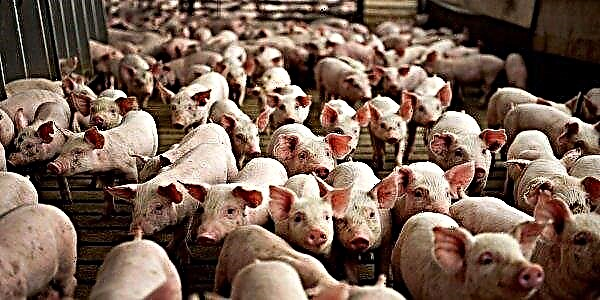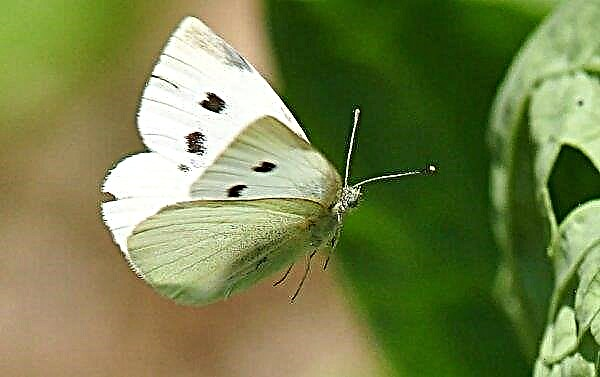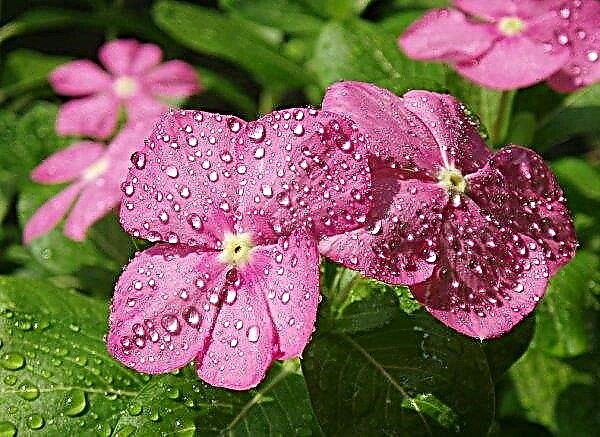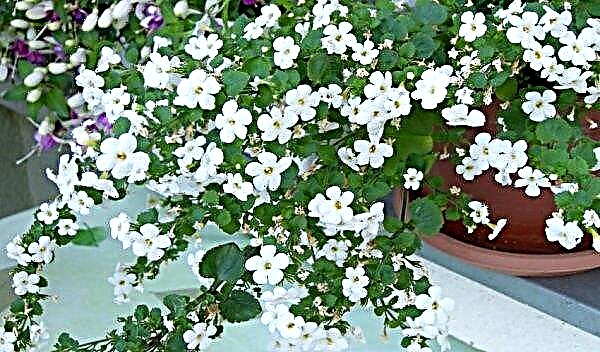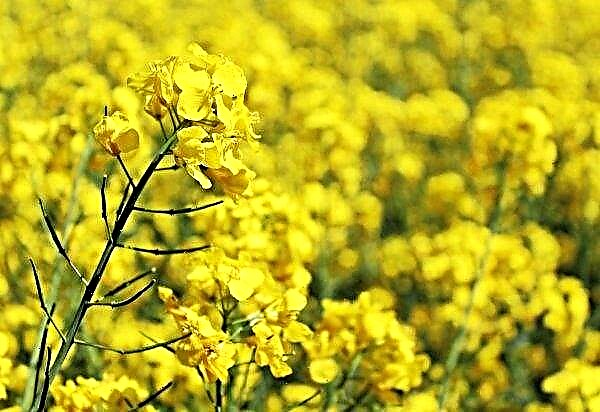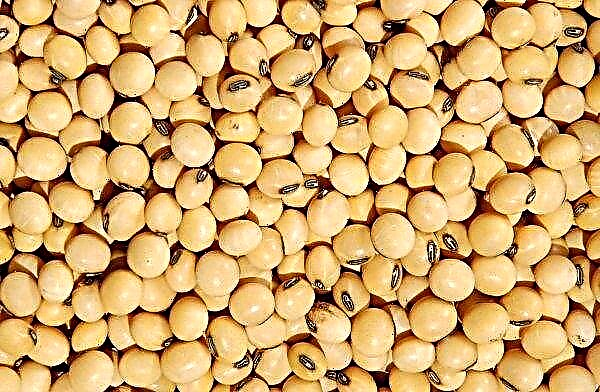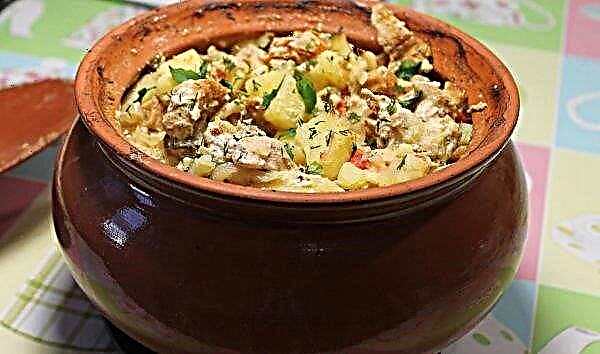Pepper is a capricious vegetable crop that requires a number of special conditions for growing. Moreover, both bitter and sweet (or, as they call it more often, Bulgarian) peppers need the same conditions of detention. We offer to deal with the correct watering of this plant - one of the most important procedures for caring for the crop.
The importance of watering pepper properly
Pepper does not tolerate drought. Its root system for the most part is close to the surface of the soil, so it is so important to monitor soil moisture. If there are already flowers or ovaries on the bush, even a slight delay in watering can cause them to fall. And the lack of moisture during fruit ripening will affect the external and gustatory qualities. At the same time, excessive watering can also negatively affect the development of culture: growth retardation, the appearance of diseases.
And the lack of moisture during fruit ripening will affect the external and gustatory qualities. At the same time, excessive watering can also negatively affect the development of culture: growth retardation, the appearance of diseases.
What water is better to water?
You can’t water pepper with cold water - it will stop growing. The optimum temperature is +22 ... + 25 ° С. If you plan to water from a well or a well, it is better to fill large tanks with water in advance so that it warms up. If tap water is used, it must be defended not only for heating, but also to reduce chlorine in it. In hard water to soften, you can add wood ash.
Important! In the cold period, plants can be watered even with hot water +40 ... + 50 ° C, but pour it so as not to wet the stem.
Watering Methods
There are several watering methods:
- manual;
- mechanical;
- auto.
Each of them has its pros and cons. This makes it possible to choose the gardener most suitable for the existing conditions and opportunities.
Manual
Familiar and affordable, but also the most time-consuming way. More often used in greenhouses where special irrigation systems are not installed, or in small garden areas. It is necessary to water in open ground in the morning, before sunrise, but it is also possible in the evening after sunset. Otherwise, the sun may burn the seedlings.

You can water from various containers: watering cans, buckets. You can use the hose, transferring it from one bush to another. Peppers can not be watered from above with a large stream, but only under a bush, or with sprinkling irrigation.
Mechanical
A mechanical method of irrigation is convenient, but also requires human intervention. The gardener will have to turn the system on and off, as well as control the watering. Due to the lack of automation, the cost of such equipment is also low.
Auto
The most expensive option. This is a special system, equipped with sensors and a control panel, which performs watering automatically. For implementation, you need a constant source of electricity and water supply.
Also need pipe laying. Pipes are best used not soft, so that they withstand any pressure of water. To install such a system, you need to carefully consider the project, since it is installed for a long time.Did you know? Wealthy merchants were formerly called "sacks of pepper." This was considered an honorary title.
Irrigation systems are:
- Subsoil. It consists in laying pipes underground. At the same time, it is quite difficult to adjust the uniform distribution of moisture over the site. The method is suitable for hygrophilous varieties of pepper, so it is rarely used.
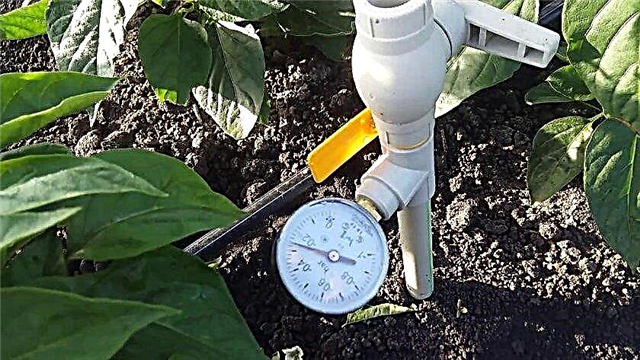
- Sprinkling. Imitation of rain. It consumes a lot of water. But after the method there is no need for loosening the soil. During the flowering period, pepper can not be applied, as it washes away pollen. Do not water under the sun to avoid burns. In the greenhouse creates excessive moisture.
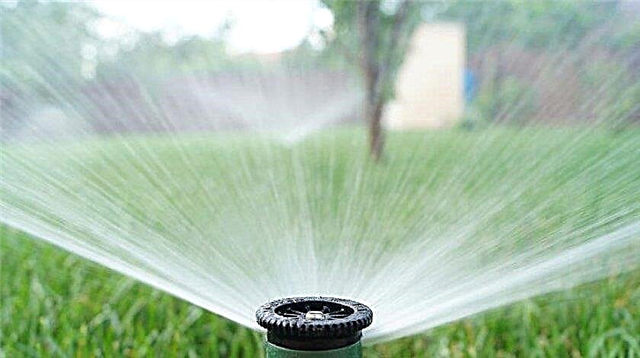
- Drip. To organize drip irrigation, pipes are laid on the surface near rows with bushes with small holes where water will leak. For different soils, the recommended distance between the holes may be different. So, for lighter soil, holes are made 15–25 cm, for heavy loamy soil - 50–60 cm.
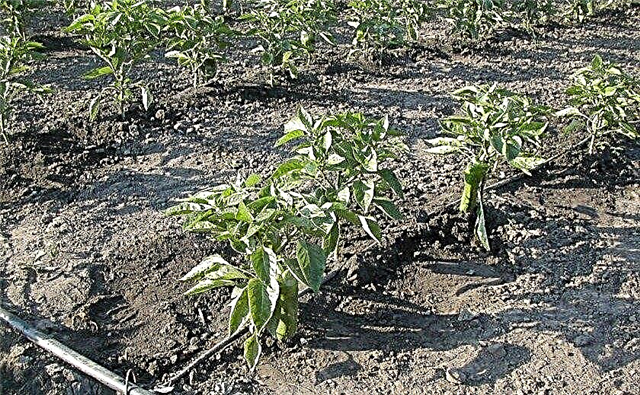
For pepper, drip irrigation is better. Economical water consumption. The drip method can not only be watered, but also be fed (this process is called fertigation). You can use any completely soluble fertilizer. Fertigation saves time on feeding. In addition, drip irrigation will deliver fertilizer directly under the root, which will increase its effectiveness, and will exclude the ingress of funds on the leaves and stem of plants.
How many times and how often to water pepper?
For the development and fruiting of the culture, you need to follow these irrigation rules:
- pepper should grow in the hole so that the water does not spread, but gets to the roots;
- pour warm settled water and small portions so as not to erode the ground from the roots;
- the soil should be soaked with water at 50–70 cm;
- water the bush on one side, and loosen the other, while alternating sides.
Important! It is better to water and loosen the soil less often than constantly pouring it.
A good measure to prevent drying out of the soil is mulching, which is recommended in July and August during the period of high heat. The top layer is sprinkled with sawdust, hay, peat or mowed grass.
This will allow loosening and watering the earth less often, which is important, because pepper has a fragile root system that does not go deep into the ground. In addition, mulching prevents the spread and growth of weeds.
It is important that the mulch layer does not contain seeds of other plants. A few more useful functions of mulch are protection against temperature differences in the soil and saturation of it with useful substances. Pepper seedlings need to be watered every 2 days. When 2-3 true leaves appear, watering will be required every day.

In general, you need to monitor the condition of the soil. If it is sticky, rolls into a tight ball, then watering should be stopped for several days. In open areas after rain, you should also check the soil. Sometimes rain only wet the surface superficially, therefore, additionally it is necessary to irrigate, albeit in smaller volumes.
Earthen cake cannot be formed near plant bushes. Firstly, it closes the air access to the roots, and secondly, when it dries, it cracks, which exposes the roots and can even injure them. This cake must be carefully loosened.
In greenhouses, watering should be regular. If at night it is not very cold, then you can water in the evening. Then the evaporation will be minimal. And in the morning you can loosen the soil. It is important to monitor the level of humidity and not to forget about ventilation. Otherwise, excess moisture will lead to rotting of the roots, as well as the appearance of fungi and diseases. Too wet beds attract slugs.
During the heat
In hot weather, daily watering is required, sometimes double irrigation in the morning and evening hours may be required. The volume of spent water is 1-3 liters per bush.
During landing
If the landing occurs in open ground, it is better to perform it when the weather is cloudy, or in the evening, when the sun's rays are no longer too active. Before planting, the soil must be well flooded. When the water is completely absorbed, plant the plant. Watering after planting for the first time is necessary after 5-7 days.

Before flowering, pepper can be watered once a week. If it is too hot, and the soil dries quickly, watering should be increased up to 3 times a week.
During and after flowering
When flowers appear, watering can only be done under the root, irrigation from above must be stopped so as not to wash off pollen and not to bring down flowers. Water 2-3 times a week. Pepper blooms in phases, so the discovery of new flowers should be accompanied by watering.
When ovaries appear, the frequency of watering is reduced to once every 3-4 days, but at the same time, the volume for the bush is increased to 5 liters. During fruiting, watered 1 time per week. Fruits begin to develop in length, then in breadth, and at the end gain wall density. If there is not enough moisture, the vegetables will be small and not juicy.
Did you know? In ancient times, conquerors lent tribute to the conquered peoples in the form of pepper. For example, Ancient Rome paid to the governor of the Huns Attila and the Visigoth leader Alaric I more than a ton of black pepper. For this, the attacks on Rome were stopped.
Features of irrigation combined with fertilizers
It is important to water the pepper after each feeding. This improves the adoption of fertilizers by the plant. Top dressing is administered only in liquid form and usually every 2 weeks. In addition to organic and mineral fertilizing, you can water the culture with nettle infusion, which contains many substances necessary for pepper: calcium, potassium, magnesium.
When to stop watering pepper?
Peppers cease to water during ripening. This occurs 10-15 days before harvest. A decrease in moisture leads to faster ripening of the fruit. Irrigation activities resume when flowers begin to appear again.

Signs of improper watering
You can detect errors in the humidification procedure by the following signals:
- Excessive watering reduces soil aeration and leads to inhibition in the development of plants. Culture is slowly growing, it may be sluggish.
- Possible falling of flowers and ovaries.
- There are diseases. It is necessary to monitor the condition of parts of the plant. If spots appear, then this may be a sign of a developing fungal or other disease associated with increased soil moisture.
Grow a generous harvest of pepper under the power of each grower. But you have to ensure proper care to the vegetable, who needs light, heat and moisture. To facilitate, you can install a mechanical or automatic irrigation system. Do not forget about fertilizing together with watering, then the plant will generously thank good fruits.




